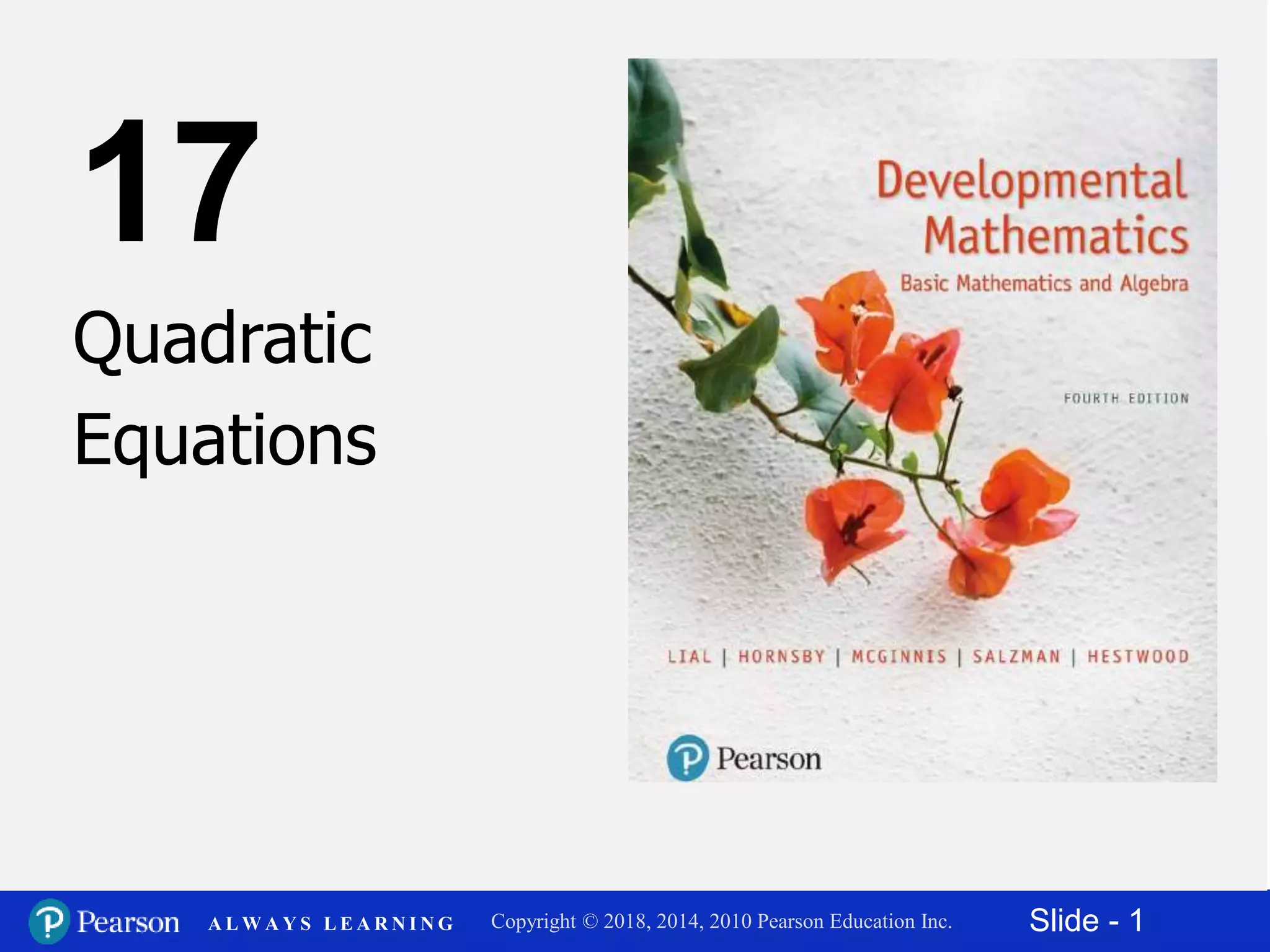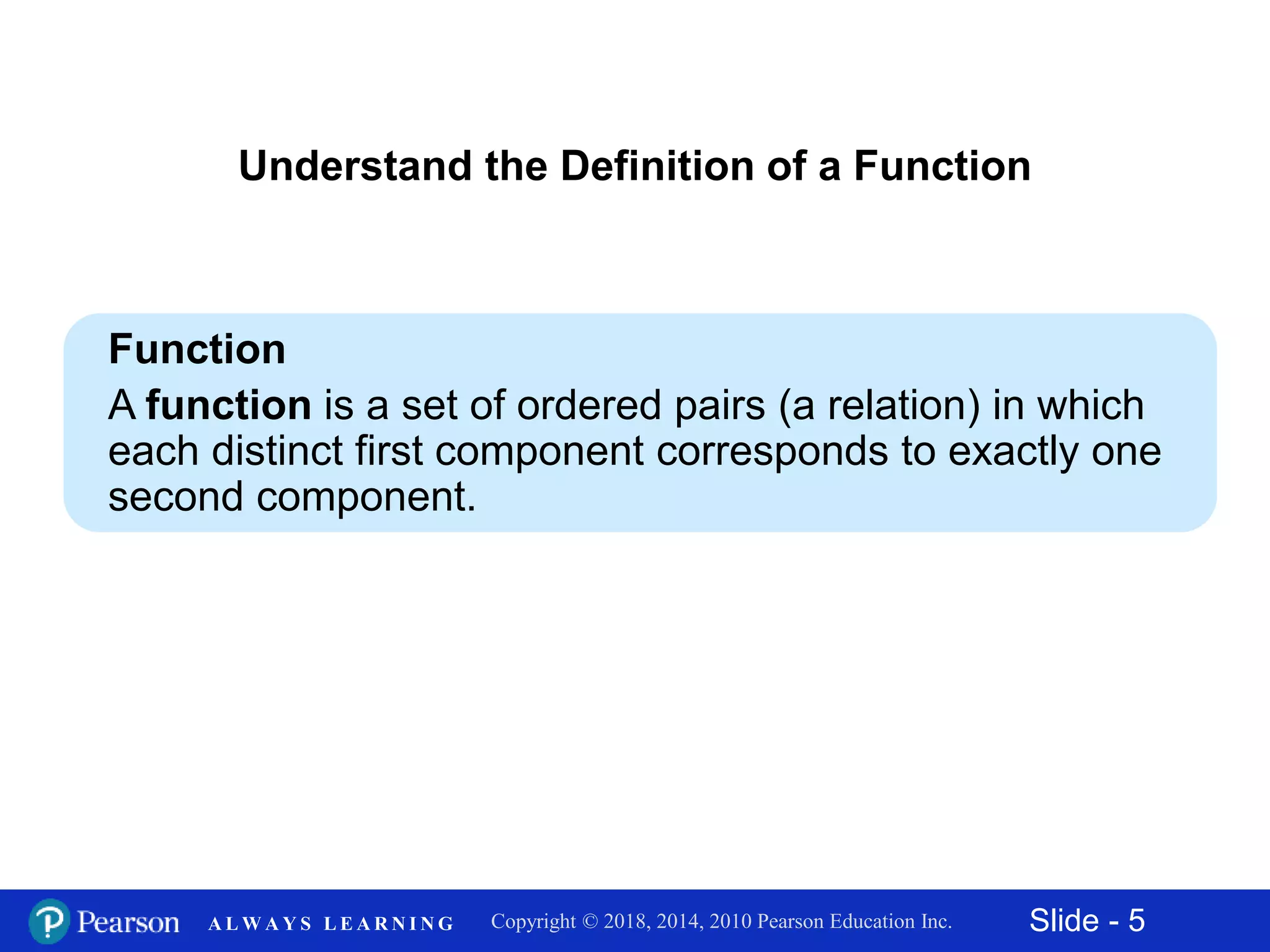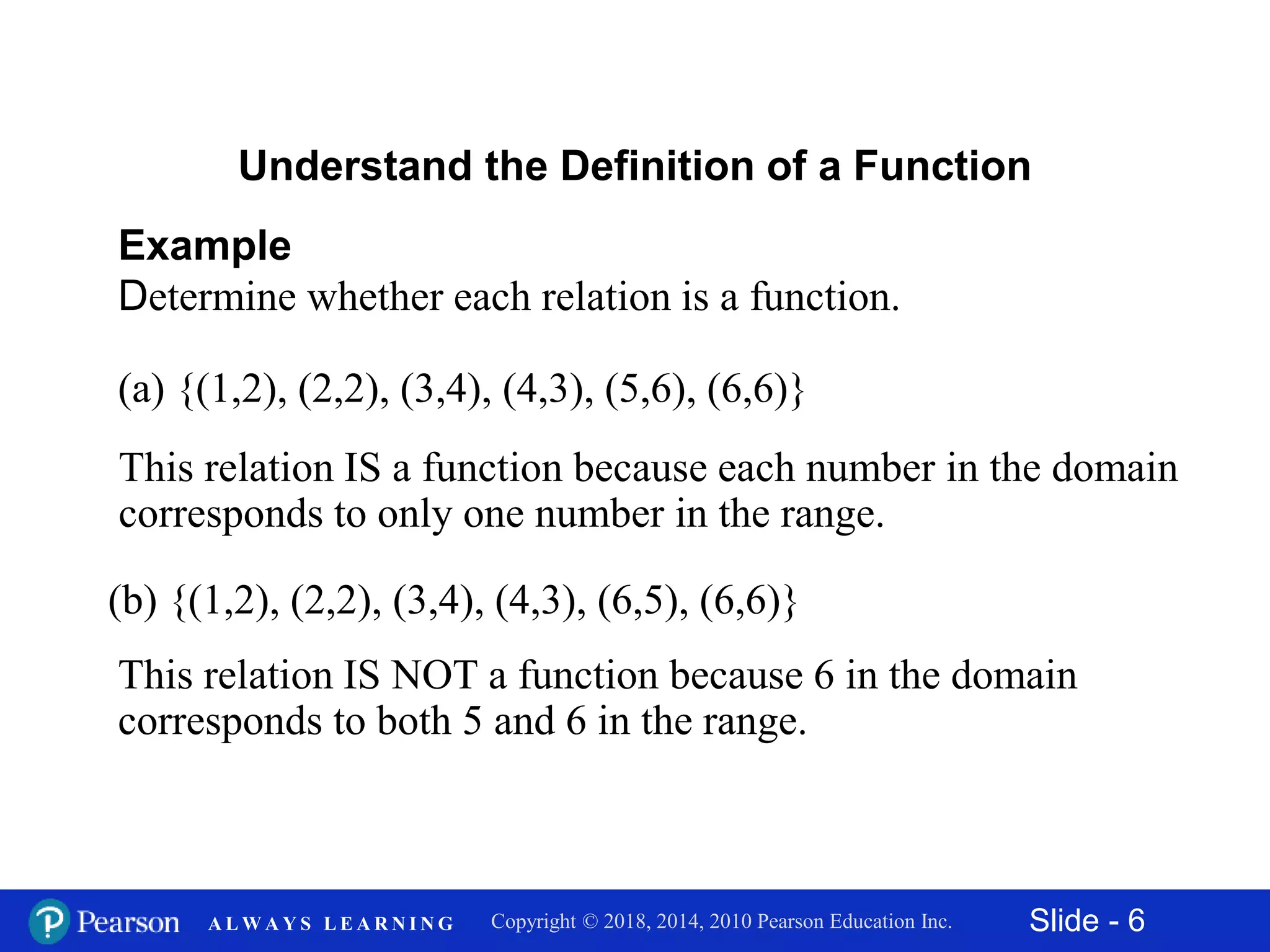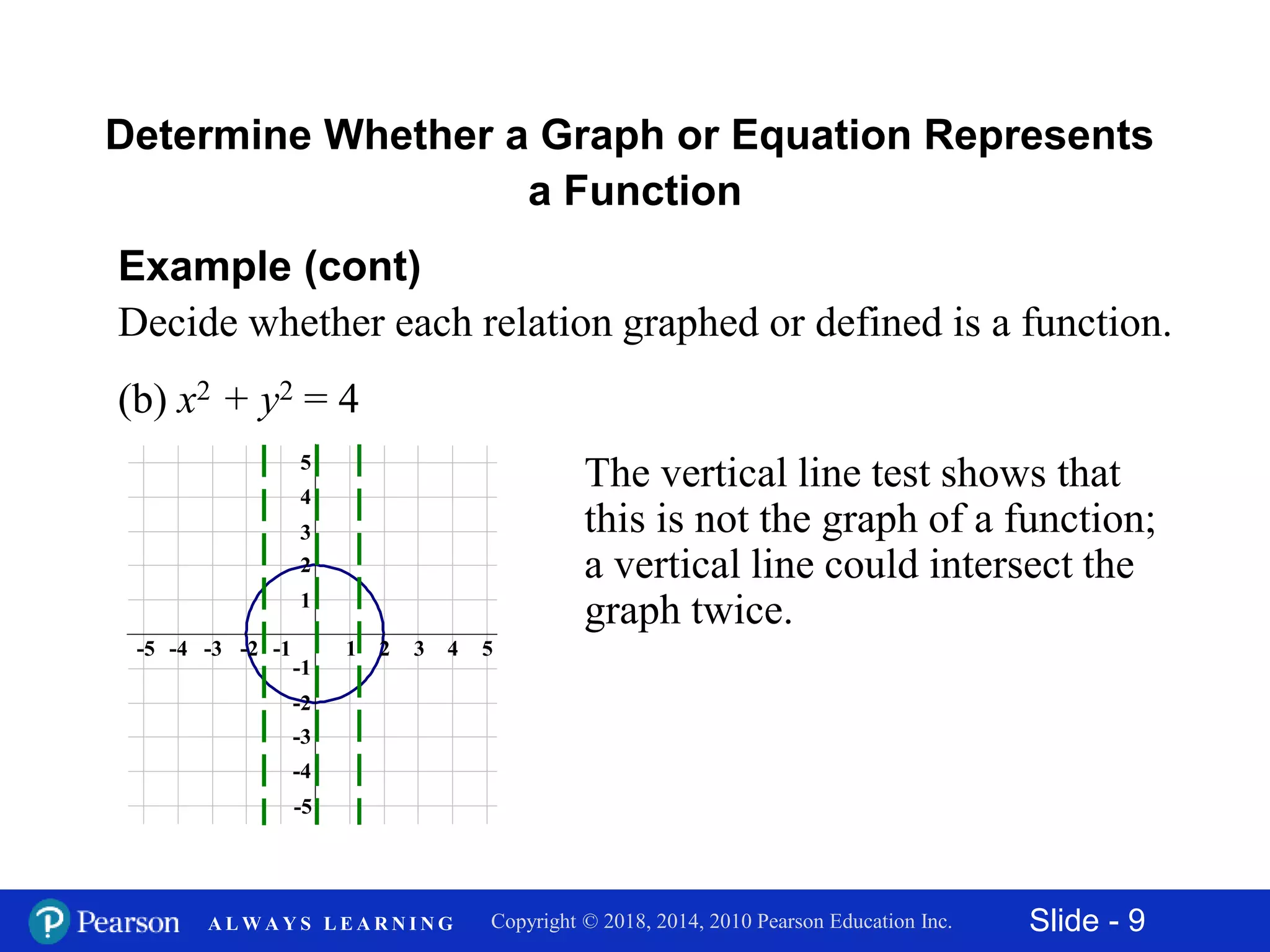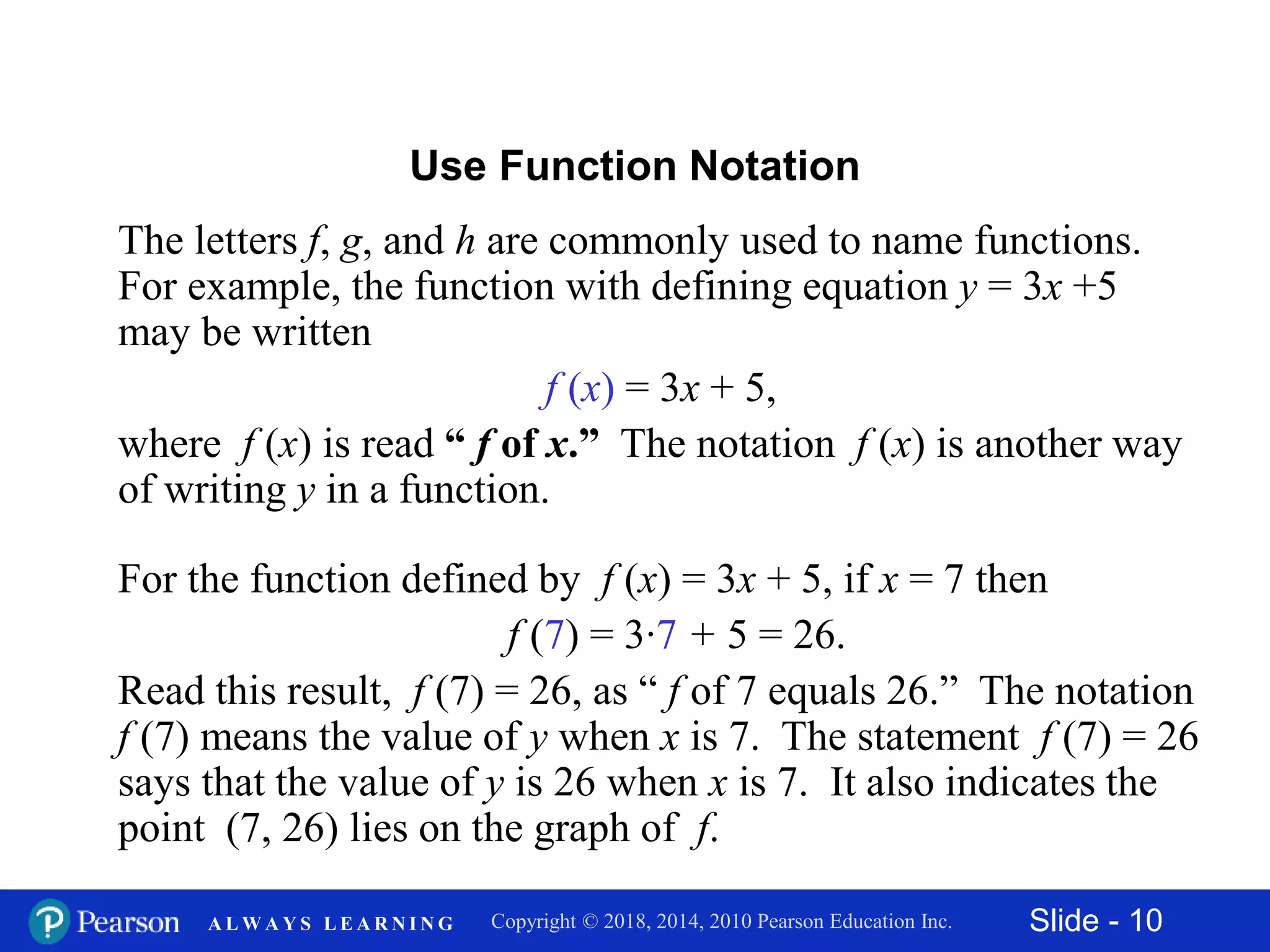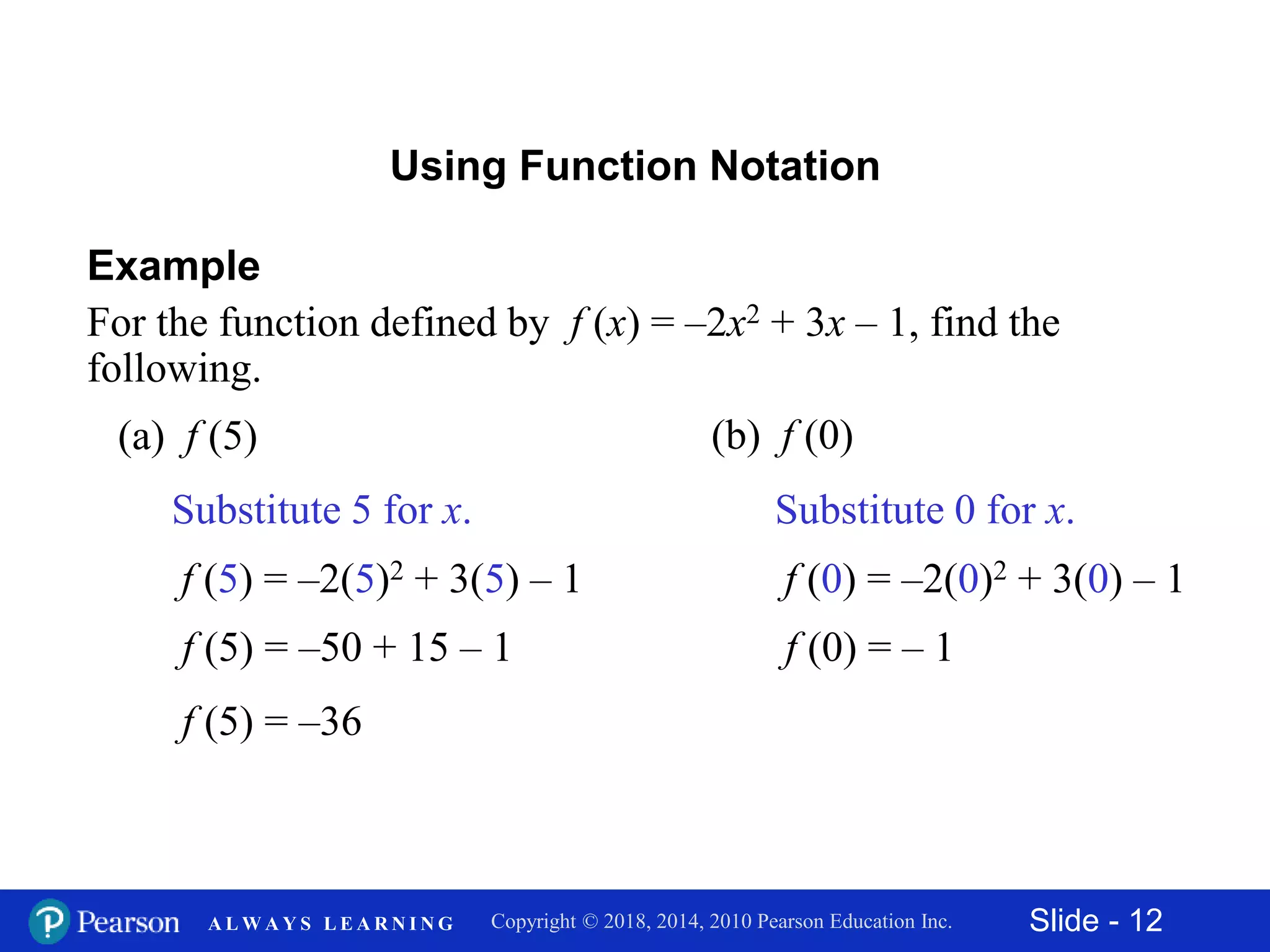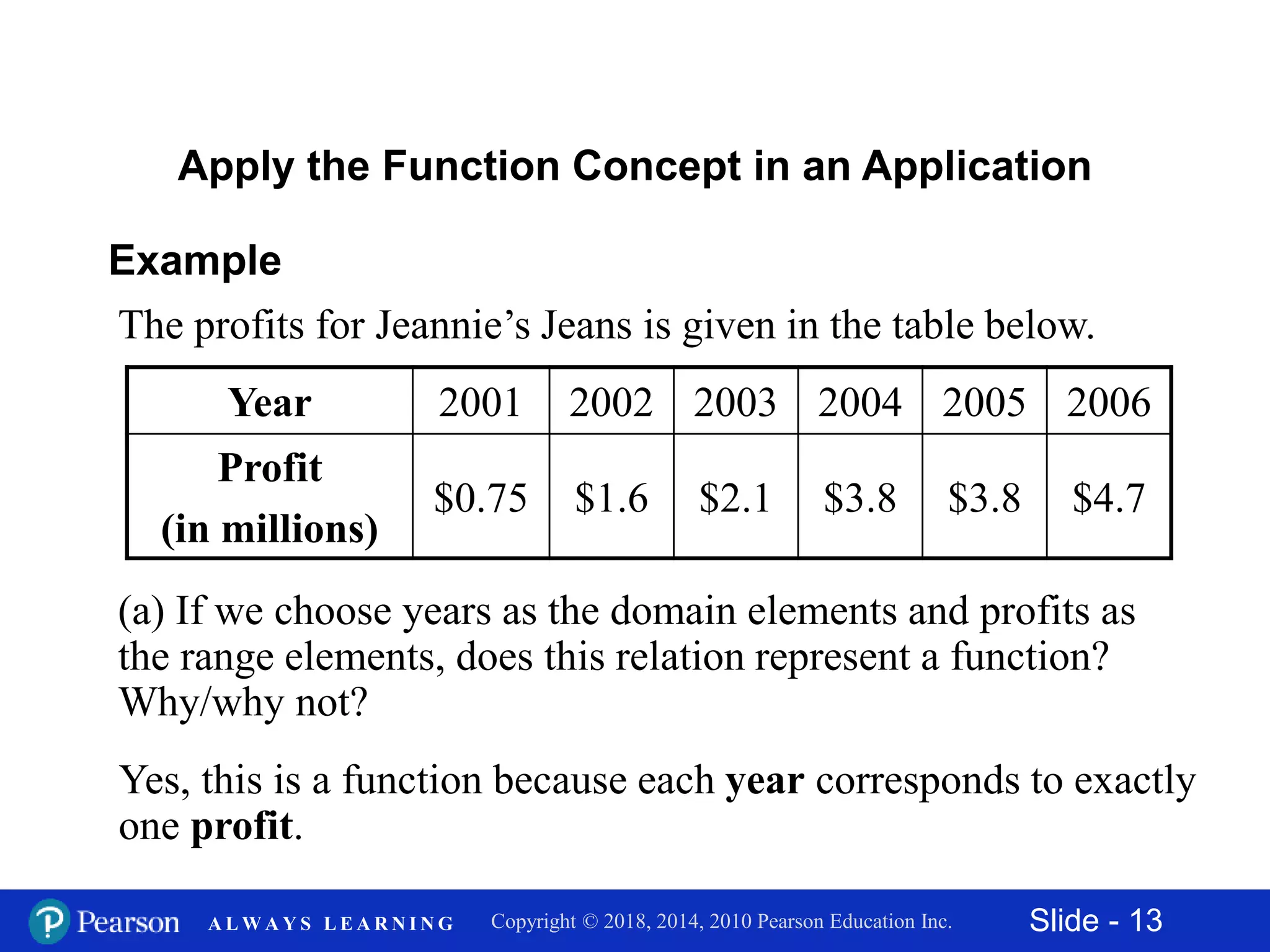This document discusses functions and how to determine if a relation represents a function. It defines relations and functions, and explains how to identify the domain and range of a relation. It also describes how to use the vertical line test to determine if a graph or equation defines a function. The document demonstrates using function notation to evaluate functions at given x-values and applies the function concept to an example about annual profits of a jeans company.
